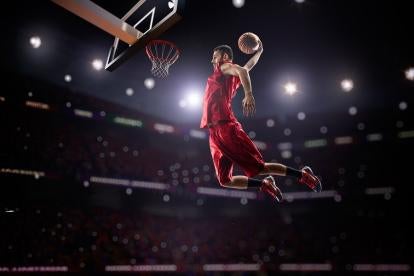A federal district court in New York recently held that embedded tweets could violate the exclusive right to display a copyrighted image. In 2016, Plaintiff Justin Goldman snapped a photo of New England Patriots quarterback, Tom Brady, with Boston Celtics General Manager, Danny Ainge. Goldman then uploaded the photo to his Snapchat Story. The image went viral, making its way onto Twitter, where it was uploaded and re-tweeted by several users. From there, media outlets and blogs published articles which featured the photo by embedding the tweets on their webpages. Goldman sued the media outlets for copyright infringement.
Under the Copyright Act, a copyright owner has several exclusive rights, including the right to “display the copyrighted work publicly.” To display a work is to “show a copy of it, either directly or by means of a film, slide, television image, or any other device or process.” It was undisputed Goldman held a copyright in the image. At issue in the case was whether the media outlets’ “embedding” the Twitter links violated Goldman’s right to display the image, even though the media outlets did not copy or save the photo on their own servers. The court construed the display right broadly, pointing out that the drafters of the Copyright Act intended the right to encompass a wide array of technologies, including those not yet contemplated when the law was drafted.
The defendants urged the court to rely on the Ninth Circuit’s ruling in Perfect 10 v. Amazon, and employ the “Server Test.” Under that test, “whether a website publisher is directly liable for infringement turns entirely on whether the image is hosted on the publisher’s own server, or is embedded or linked from a third party server.” Defendants argued that the photo was hosted on servers not owned or controlled by defendants, but by third parties. Embedding a tweet merely provided “instructions” for a user to navigate to a third-party server where the photo ultimately resided.
The court rejected this reasoning, holding that the Copyright Act does not suggest possession of an image is necessary to display it. Moreover, the act of embedding the tweets created a “seamless” presentation of the photo on the news outlets’ webpages. By including the URL of the tweet in the embedding code, all defendants “took active steps to put a process in place that resulted in a transmission of the photos so that they could be visibly shown.” Additionally, the court highlighted a recent Supreme Court decision, American Broadcasting Cos., Inc. v. Aereo, Inc., in which a transmitter of content could not avoid liability based on “purely technical distinctions.”
This decision is of interest to all producers of digital content. Defendants and their amici sounded the alarm, arguing the court’s ruling “would cause a tremendous chilling effect on the core functionality of the web.” But importantly, the court explained there are a number of other defenses available. There is still an open question about whether plaintiff released his image into the public domain when he posted to Snapchat, a “serious and strong” fair use defense, defenses under the Digital Millennium Copyright Act, and limitations on damages as a result of arguably innocent infringement. K&L Gates will continue to monitor the case.
The case caption is Goldman v. Breitbart News Network, et al., No 17-cv-3114 (S.D.N.Y. Feb. 15, 2018).



 i
i

